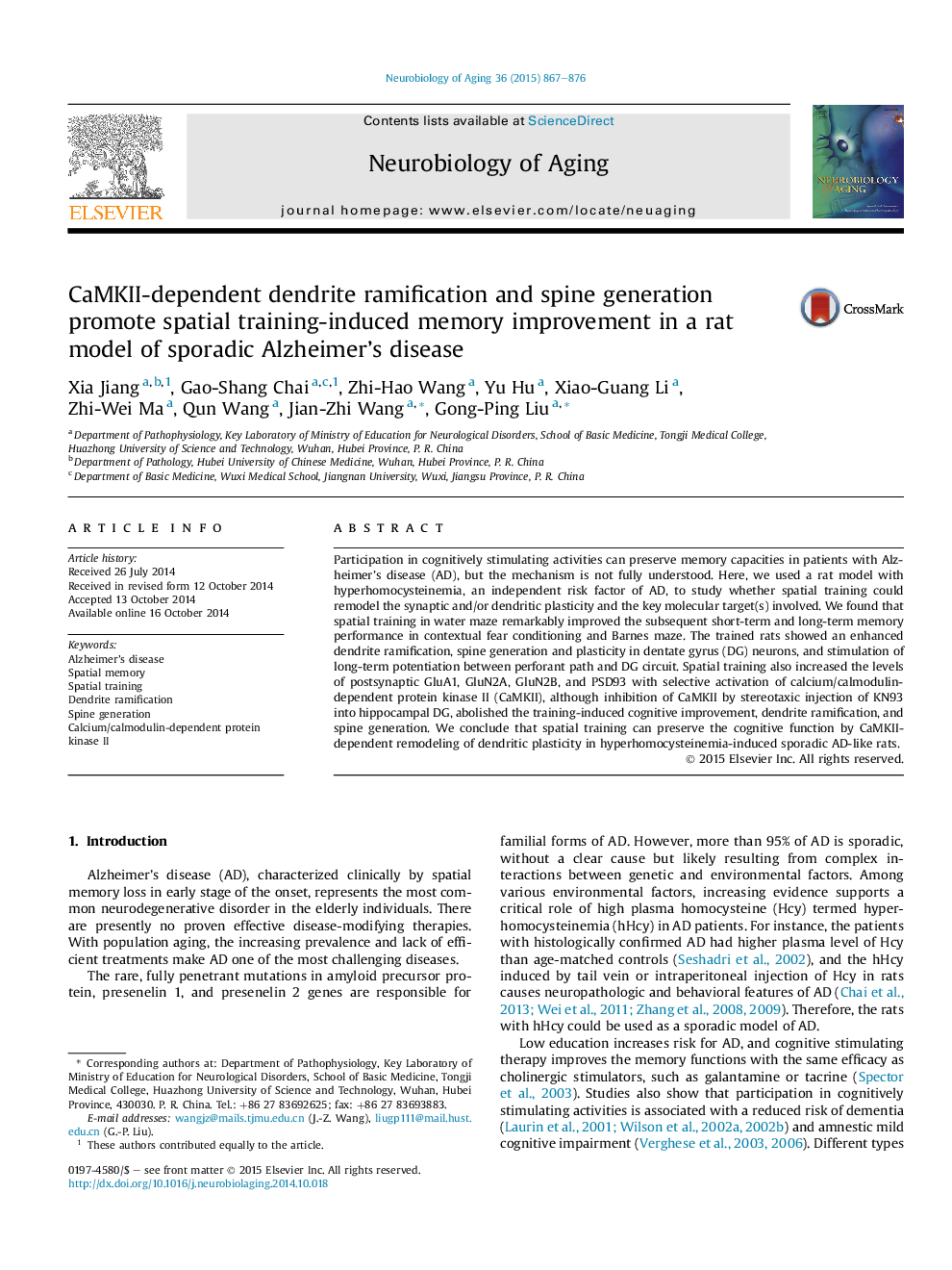| Article ID | Journal | Published Year | Pages | File Type |
|---|---|---|---|---|
| 6804844 | Neurobiology of Aging | 2015 | 10 Pages |
Abstract
Participation in cognitively stimulating activities can preserve memory capacities in patients with Alzheimer's disease (AD), but the mechanism is not fully understood. Here, we used a rat model with hyperhomocysteinemia, an independent risk factor of AD, to study whether spatial training could remodel the synaptic and/or dendritic plasticity and the key molecular target(s) involved. We found that spatial training in water maze remarkably improved the subsequent short-term and long-term memory performance in contextual fear conditioning and Barnes maze. The trained rats showed an enhanced dendrite ramification, spine generation and plasticity in dentate gyrus (DG) neurons, and stimulation of long-term potentiation between perforant path and DG circuit. Spatial training also increased the levels of postsynaptic GluA1, GluN2A, GluN2B, and PSD93 with selective activation of calcium/calmodulin-dependent protein kinase II (CaMKII), although inhibition of CaMKII by stereotaxic injection of KN93 into hippocampal DG, abolished the training-induced cognitive improvement, dendrite ramification, and spine generation. We conclude that spatial training can preserve the cognitive function by CaMKII-dependent remodeling of dendritic plasticity in hyperhomocysteinemia-induced sporadic AD-like rats.
Keywords
Related Topics
Life Sciences
Biochemistry, Genetics and Molecular Biology
Ageing
Authors
Xia Jiang, Gao-Shang Chai, Zhi-Hao Wang, Yu Hu, Xiao-Guang Li, Zhi-Wei Ma, Qun Wang, Jian-Zhi Wang, Gong-Ping Liu,
